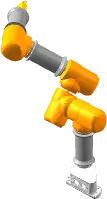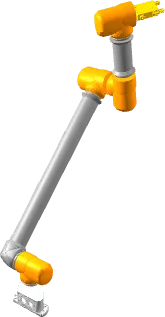Modular Robots


Modular robots offer several advantages over monolithic robots, including improved
maintainability and higher cost-efficiency. Most importantly, monolithic robots are optimized for a specific task, while modular robots are spoilt for choice, as they can switch their morphology into a vast number of other configurations. However, this increased flexibility comes at the cost of new dynamic and kinematic models, to which control and planning algorithms need to be adapted.
Research questions include
- How can benchmarks for robots be defined?
- What is the optimal module configuration for a given task?
- Which configuration consumes the least energy for a given task?
- How can we leverage reinforcement learning for robot trajectory planning?
Our toolbox CoBRA implements robot benchmarks, while Timor allows to assemble configuration for a given task. The toolbox SaRA leverages reachability analysis to plan provably safe trajectories.